White Is The New Black: 40 Albino Animals That Defy Nature
No matter where you live, you probably see animals daily — cats, dogs, rodents, birds, the list goes on. With such frequent exposure, you might think that only exotic animals would surprise you anymore. But we’re here to prove you wrong! Have you ever heard of albinism? It’s a rare genetic condition that occurs in all animal species, humans included, where there is an absence of skin pigmentation. For most living beings, melanin present in skin, hair, and/or feathers gives the animal or plant its color. However, those with albinism lack melanin or sufficient melanin quantities; this gives them their characteristic white skin, hair, and/or feathers. Unfortunately, many species utilize color as in mating and territorial displays, so this stunning anomaly isn’t something that they likely enjoy. At least, not nearly as much as we do. Check out these 40 stunning animals shamelessly flaunting their unique genetics.
1. Cute Little turtle
Let’s start off our list with a little friend that’s easy to identify. This cute little turtle’s albinism has turned its shell white. Although this may be an interesting color for us humans, we’re not sure the turtle would agree.
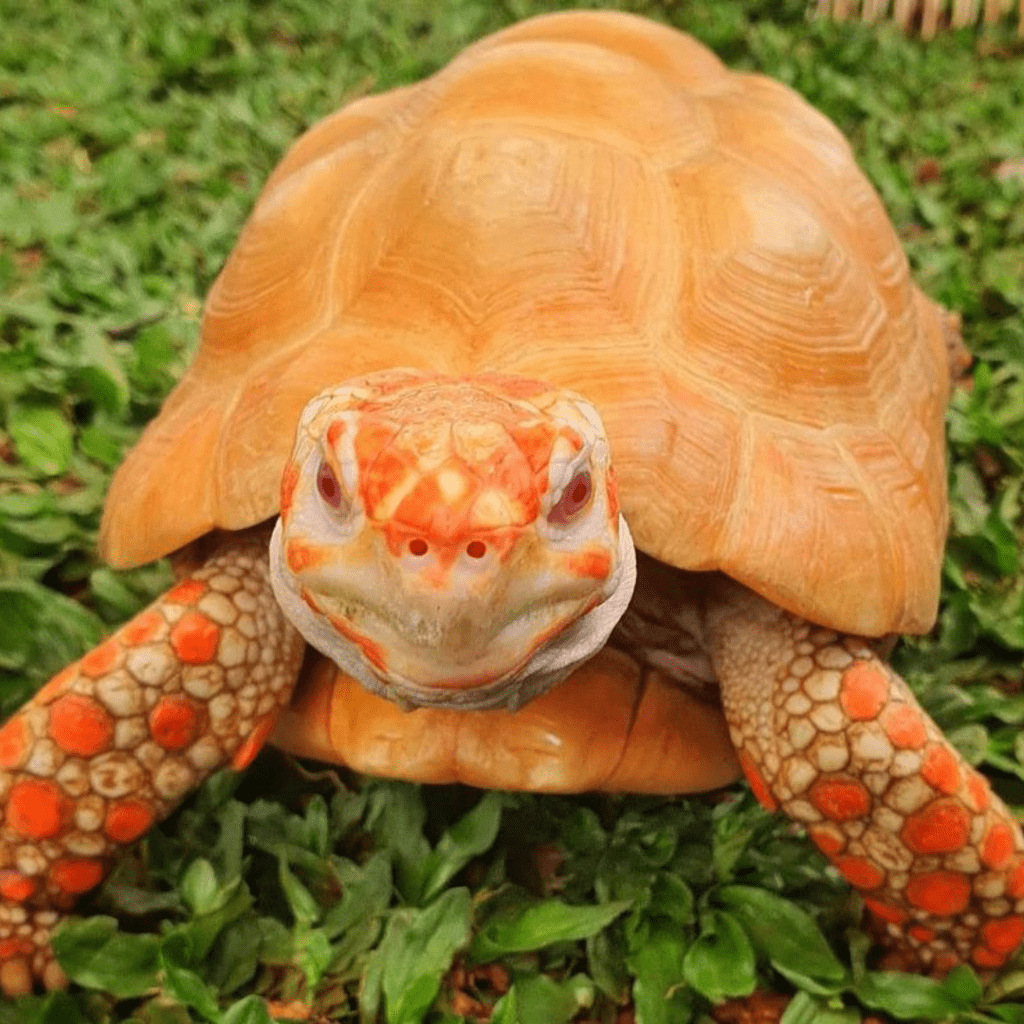
One downside of albinism is that it might make animals easier to spot by predators. A brightly colored shell like that is bound to stand out wherever the turtle goes. But it always has that shell in which it can hide and defend himself from them, Turtle-1 Predator -0
2. The Muskrats!
As the name suggests, Muskrats are closely related to rats, and they’re equally as mischievous. It is so difficult to control them that they are considered invasive creatures in many countries, where special measures are needed to deal with them.
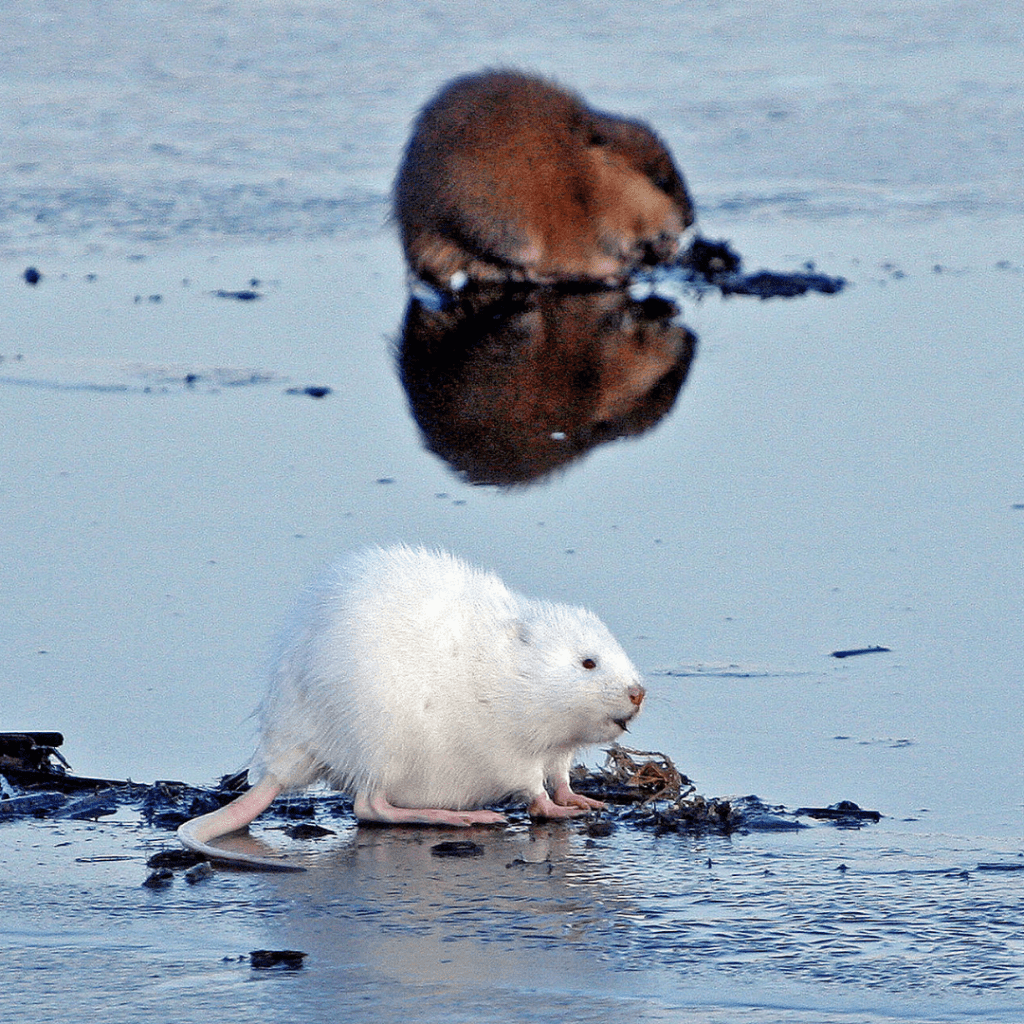
Although the white color makes this muskrat look cute, we shouldn’t be so easily fooled by its look. Aside from the color, can you tell us the difference between the two in this picture? Underneath that white fur is the same rambunctious muskrat that might lead you to call animal control.
3. Holy Cow Deer!
Deers are beautiful animals that live in herds and are one of the first prey for big cats like lions or tigers. Or, if you’re from a suburban area, they are the reason you can’t have a well-groomed garden. But this white deer looks like it is coming straight from the pages of a mythology book.
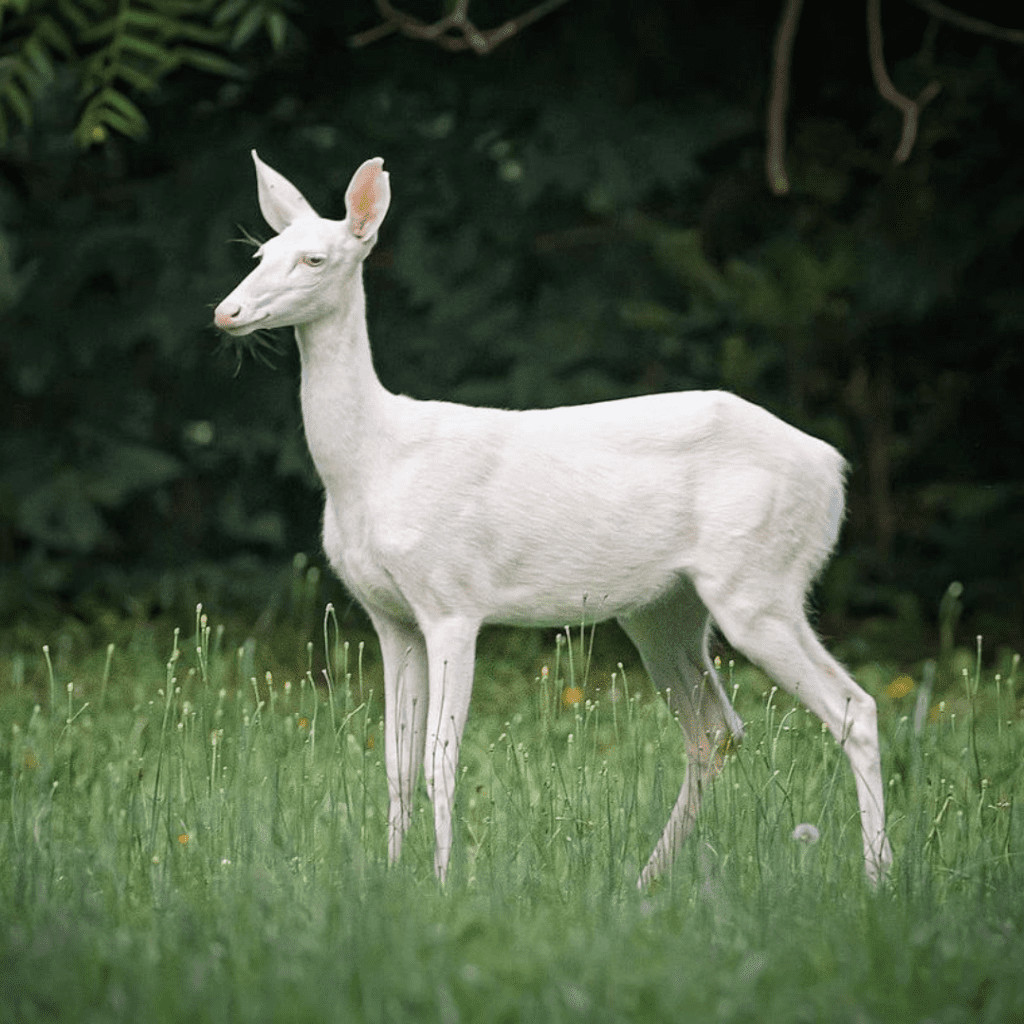
It looks like this is just phenomenal, and the predators will make a mission to hunt it down if they get a glance of it in the jungle. And, of course, humans are included in the list of predators in cases like this.
4. Porcupine with a Twist
We never thought that we would ever stumble upon an albino porcupine, but we are glad to have been proven wrong. The porcupine may look innocent, but he is well trained in defending himself if anyone comes close to him.
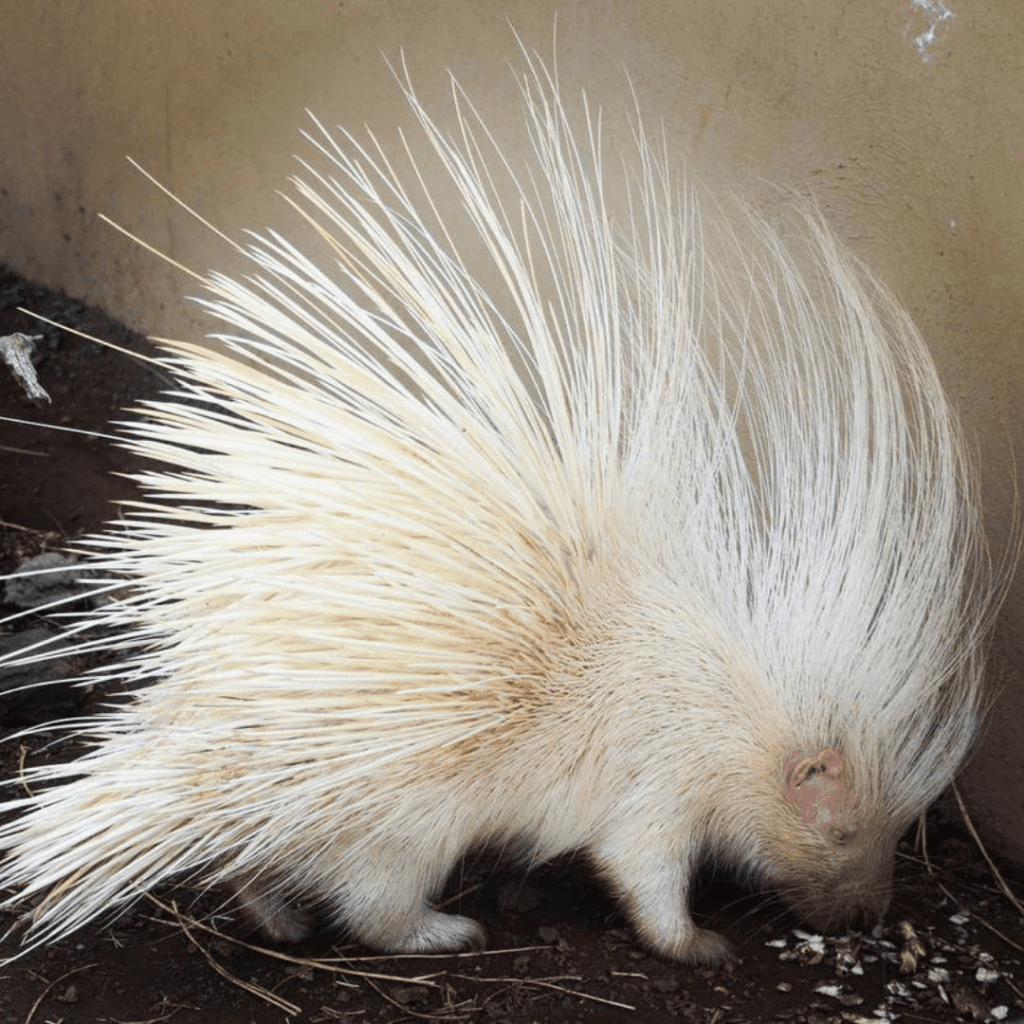
The animal’s quills are nothing but hardened hair, and the white on them compliments the look even more so. There are two “classifications” of porcupines: Old World and New World; the former is found in Africa and India, while the latter can be found in North America.
5. Whoa!
We are simply blown away by seeing albinism, even in parrots. These birds are commonly identified by their bright green color and red beak, but what we see here is totally opposite to that, and we’re having a hard time calling them parrots!
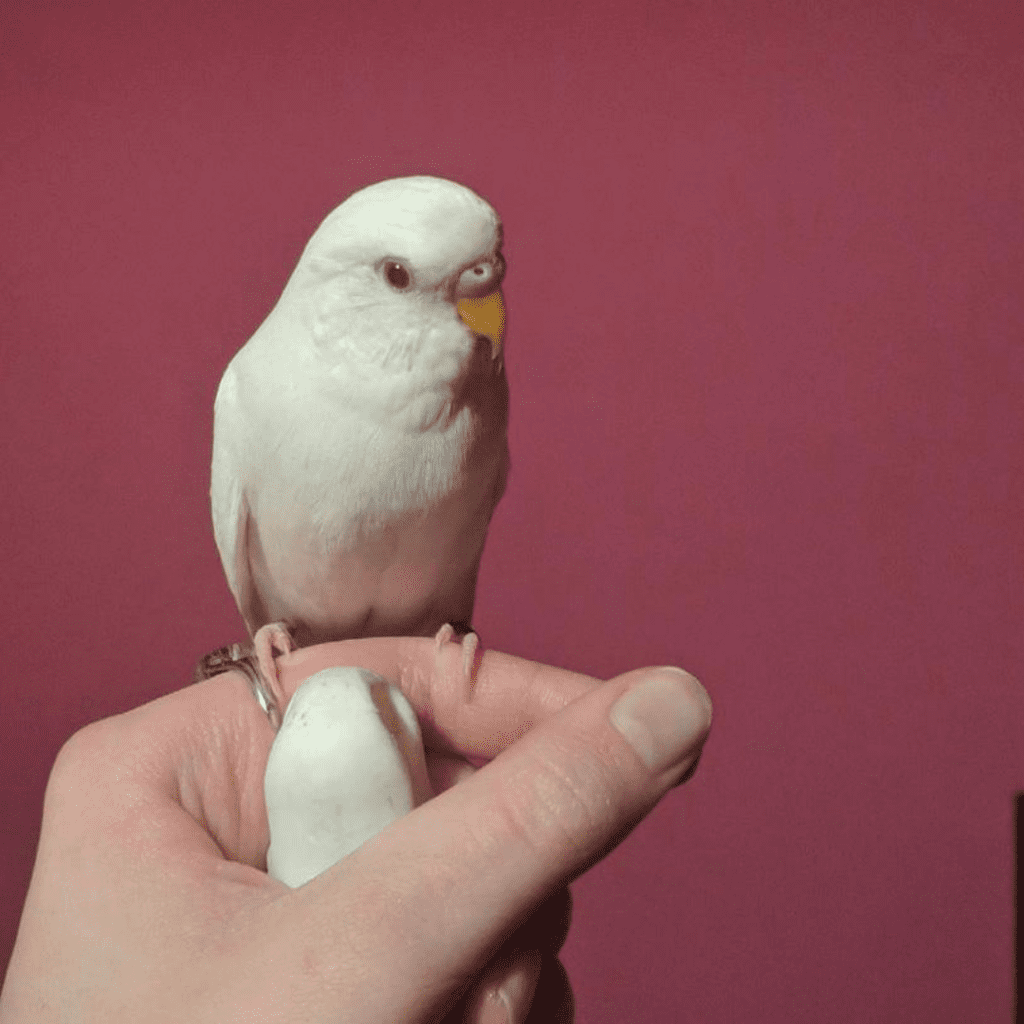
This parrot will surely attract a lot of visitors, given its stark white feathers and yellow-ish beak. Seeing animals like this strengthens our belief that nature is wonderful. Just look at the variety that one can find, even within a single species!
6. Snowball!
Hedgehogs are naturally a bizarre kind of animal, and with albinism, well, it remains true. Doesn’t the white color make it look like a moving snowball? Hedgehogs are very reserved creatures, and they find it challenging to become friendly with people.
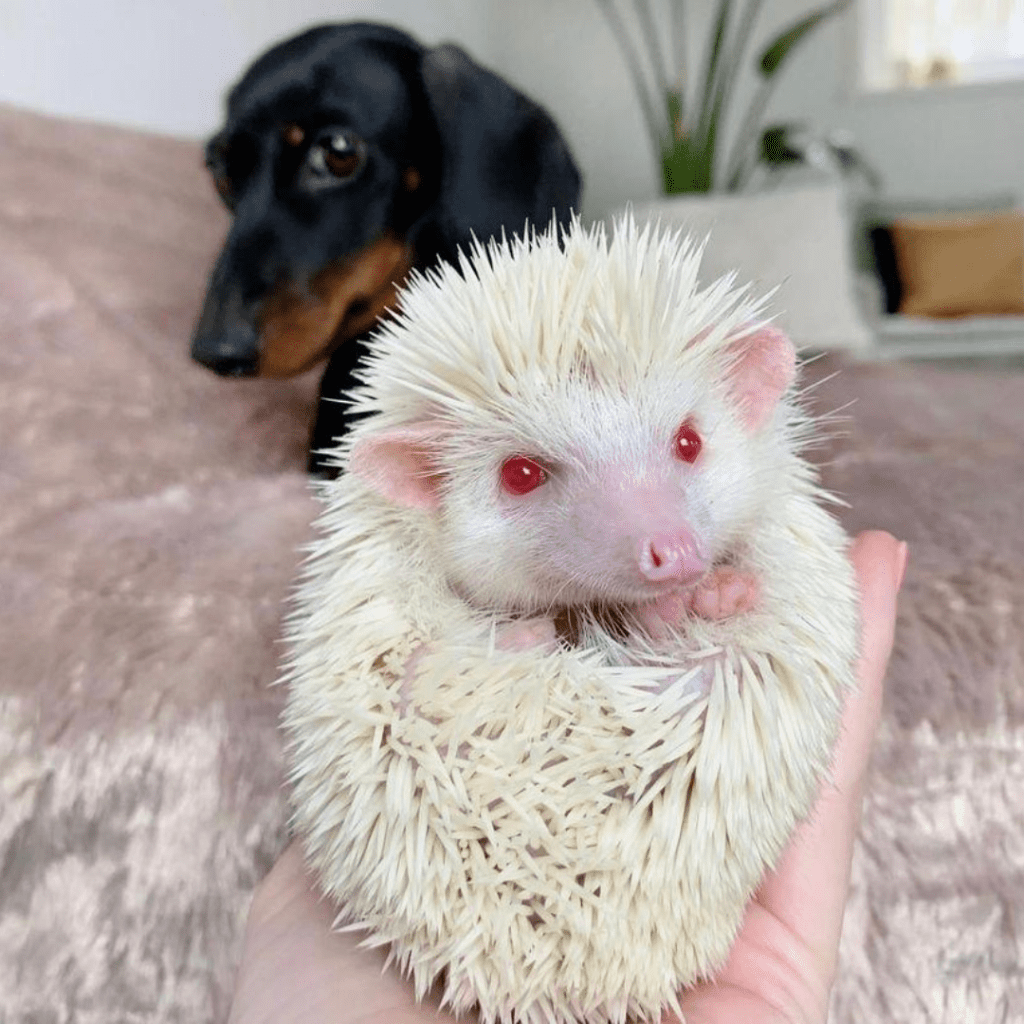
And it can also become dangerous if it doesn’t like you around because its hairs are sharp and can cause some serious damage to you if you aren’t careful around them. But if you make friends with one, as this Instagram user did, it’s hard to imagine them as anything other than cuddly pets.
7. Horses
There are many species of horses that are white, not all of which have albinism. There’s one key feature in these horses that make it easy to distinguish between animals with white hair and those without melanin. Do you know what it is?
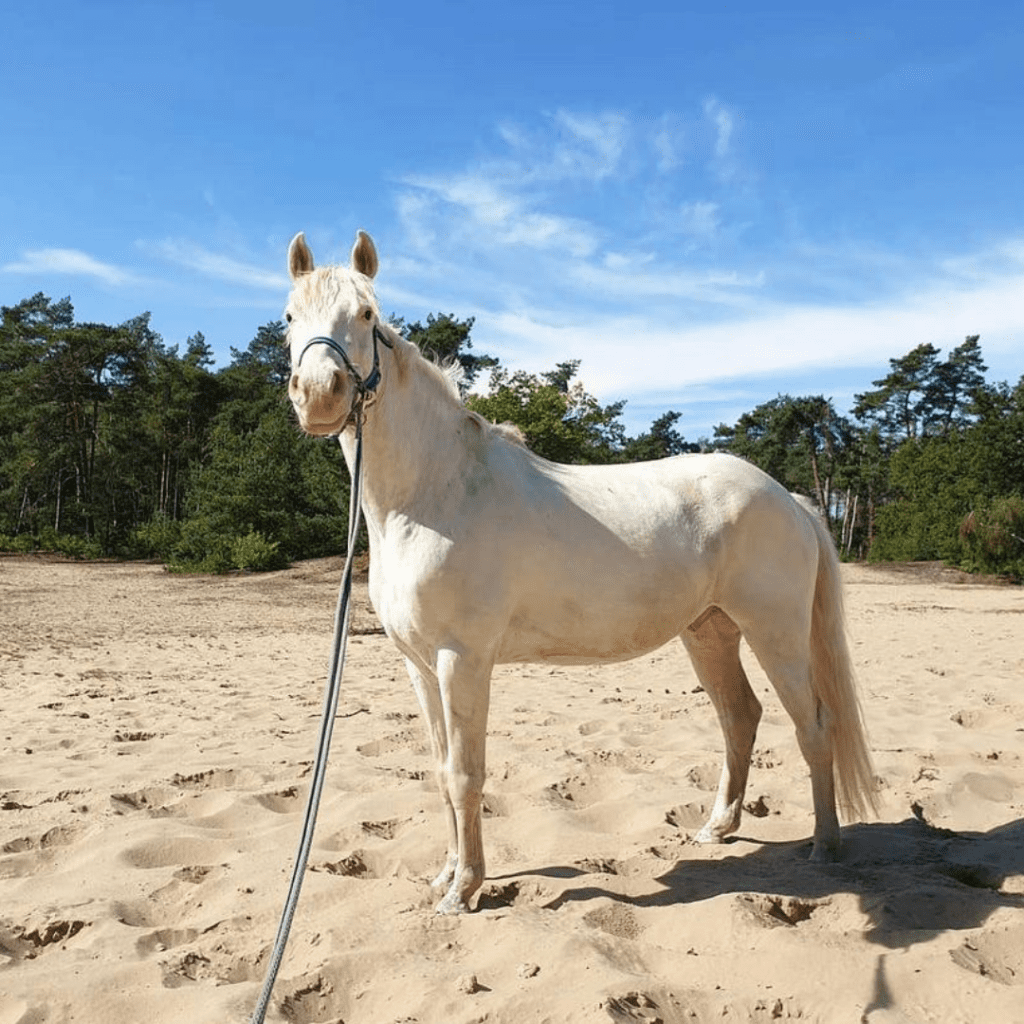
The horses with albinism will have a slight pink color at the end of their legs, and their tail will look different than an average horse. The white horse really looks fantastic; too bad the unique color would also increase the price at auctions.
8. Albino Beavers?
Beavers are semiaquatic rodents found in the woods, but we are not talking about them today. This is a close cousin to the beaver, known as the nutria. These can be easily differentiated from the beaver by looking at their tail.
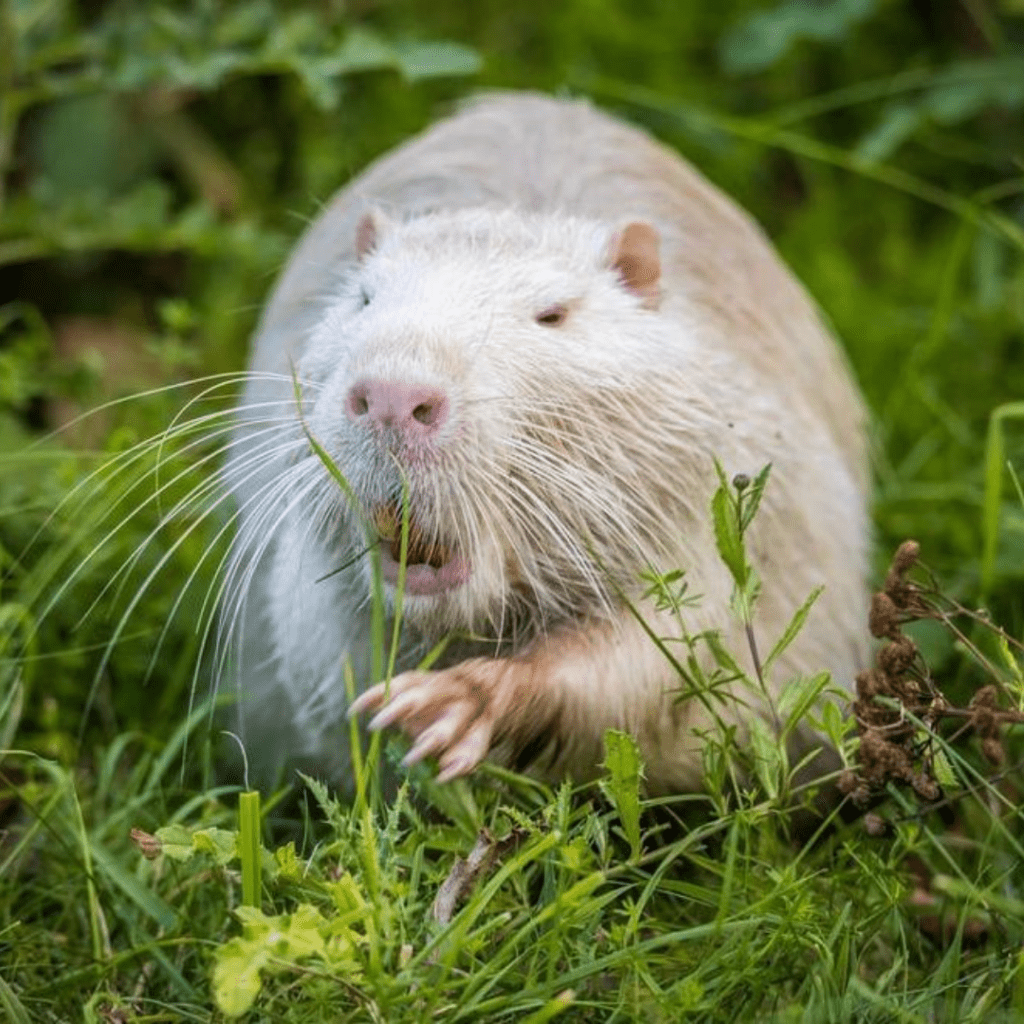
These animals are not so comfortable in winter because their tail is prone to getting frostbite in the cold weather. Nutria, also known as coypu, are native to South America. There, they can be found swimming along the shores in freshwater marshes.
9. Albino Moose
Moose are the biggest and heaviest members of the deer family. They are mainly distinguished by their big wide antlers and heavy body. They usually have a dark color, so seeing a white moose is a rare sight to behold.
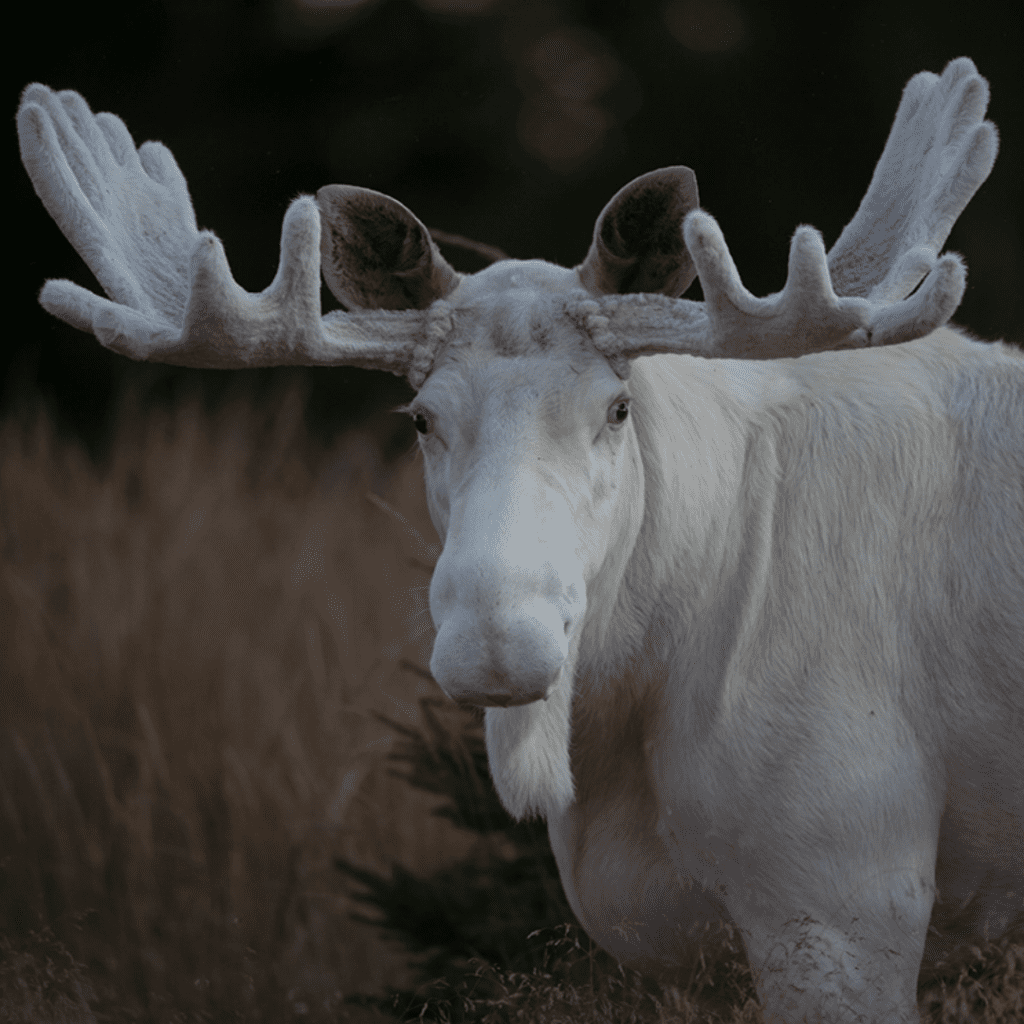
Albinism not only affected this moose’s hair but its antlers, too! It almost looks like an entirely different animal, don’t you think? Thankfully we have this image to remember it by, as it would be a rare sight to find in the wild.
10. Strangely Beautiful
Skunks are a part of the mephitidae family, and they are called skunks for a reason. They are well known to release a very pungent smell from their anal glands, which can make you leave the place immediately, and that’s the reason it’s there.
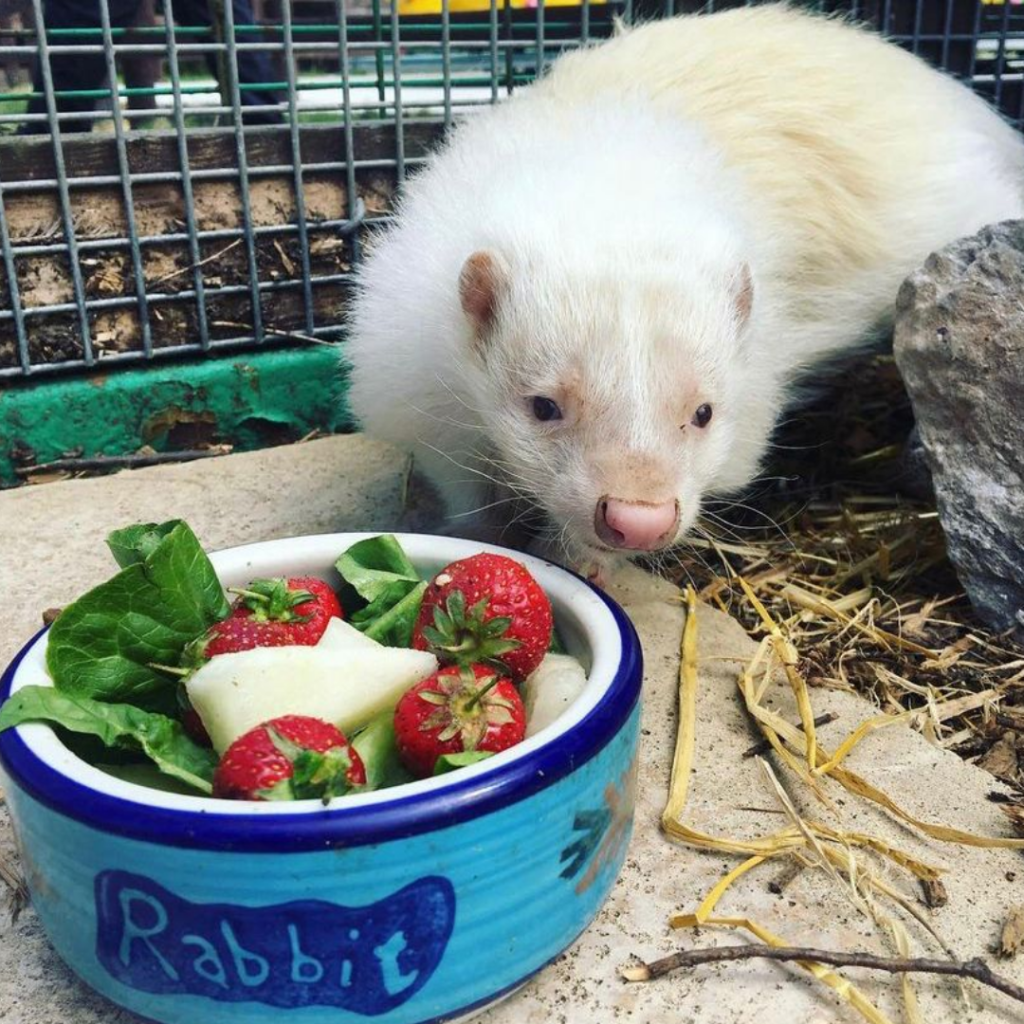
Skunks aren’t just known for their smell. Their iconic stripe running along their back is another telltale sign. If we saw it out in the wild, we never would have guessed that this cutie is even a skunk! Hopefully, Rabbit doesn’t make too much of a stinky mess for their human friends.
11. Sinister Enough
As odd and scary it looks with albinism, just wait till you see its original color. The ferret is a small but fierce-looking mammal with elongated bodies that can reach up to 50 centimeters long if you include their tail.

They have an average lifespan of around 5 to 10 years and make for a good pet. Before you adopt one, there are two things you need to know. One is that their cages can get stinky. Secondly is the lack of cuddle time. They are lazy and spend most of the day (up to 18 hours) sleeping.
12. One of the Best
Squirrels are pretty active animals that can cross the roads in the blink of an eye. It’s rare if you’ve seen them up close because they don’t stay at one place for even a few seconds, but if you have, you know how beautiful they look.
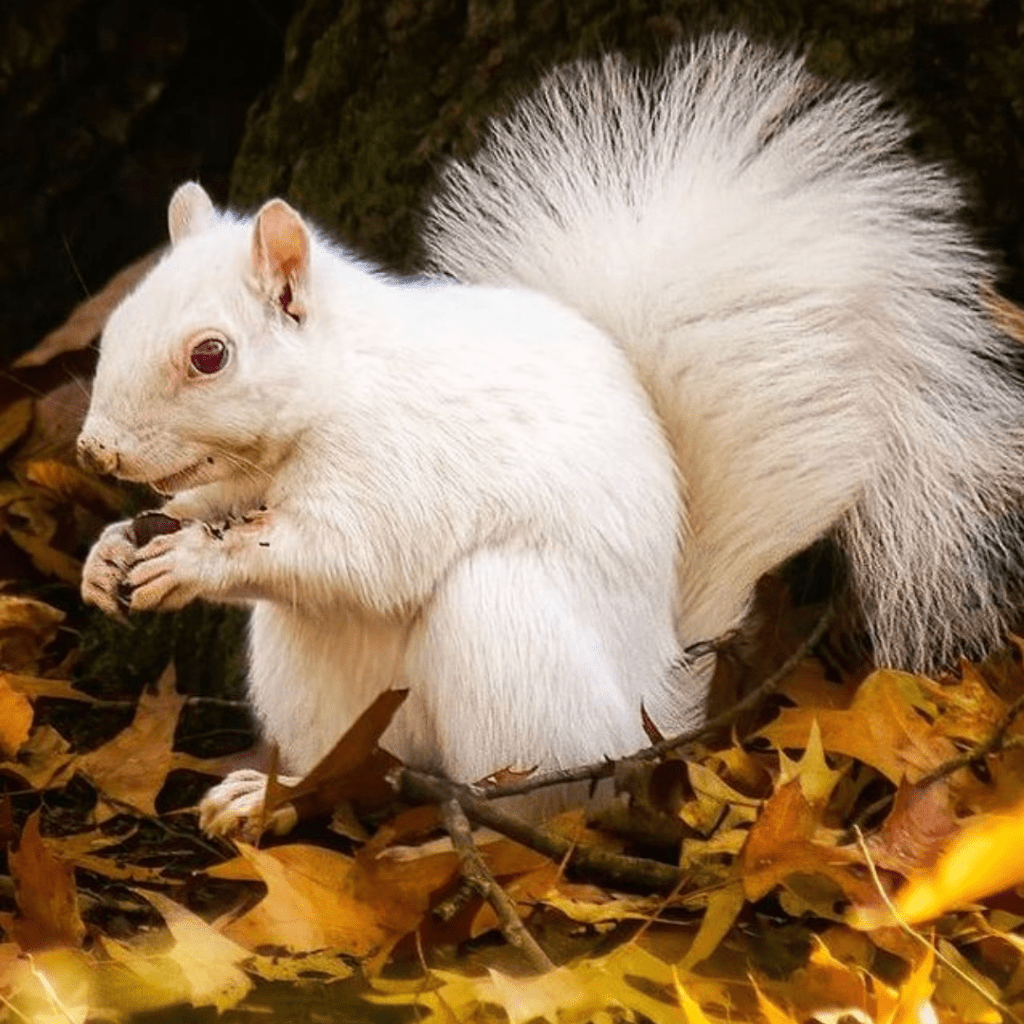
But this albino squirrel is something else entirely because the pure white color looks astonishing. We could stare at this picture for hours! Squirrels are also great as a pet, and if you get a white squirrel like this one, you’re very lucky.
13. Unicorn Spotted!
Everyone knows what unicorns are. Maybe you read about them in storybooks or saw them in cartoons or artworks. One thing is consistent, no matter where you saw them. Aside from their distinct horn, unicorns are depicted as being white-colored. Sadly, this pale beauty is not a unicorn.
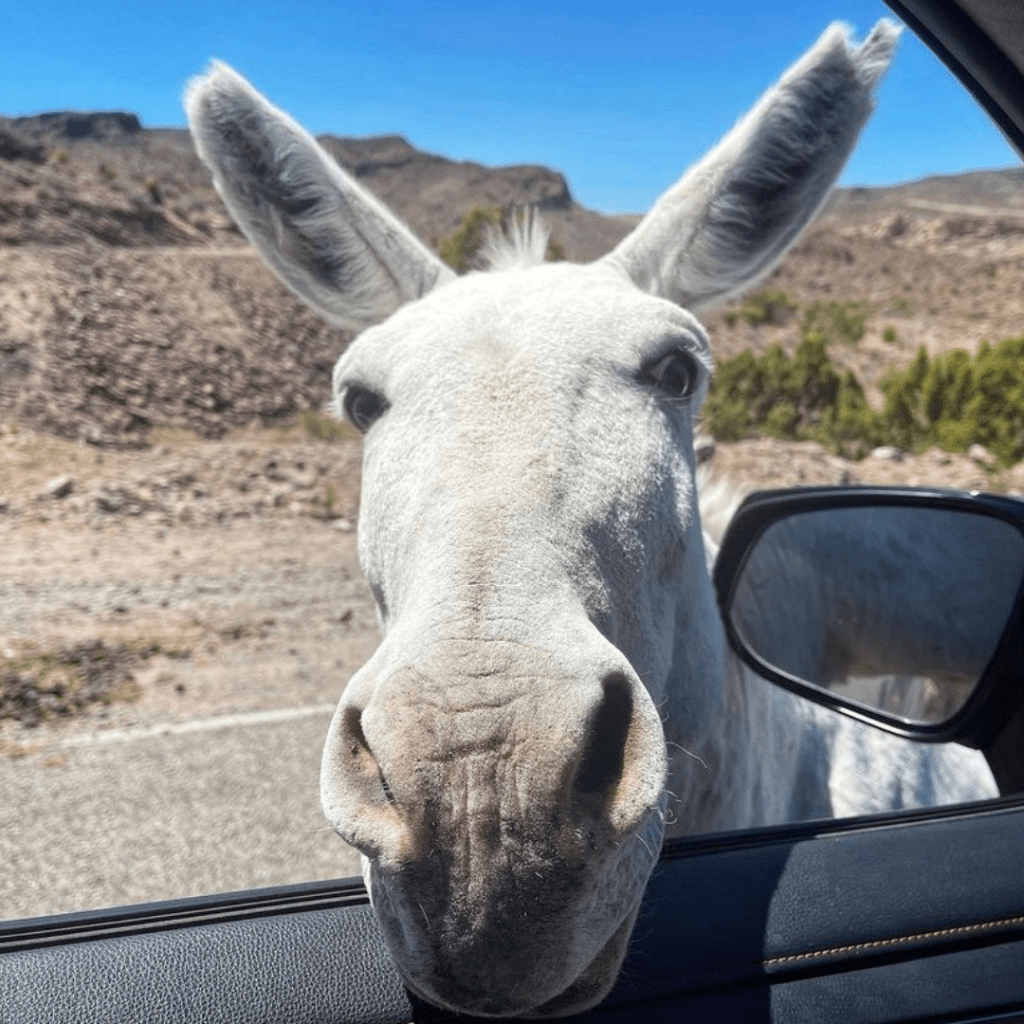
This albino donkey just needs a horn, and we would be hard-pressed to argue that they don’t exist. But let’s not dismiss it entirely. The donkey is a very hardworking animal, and it has our respect for that. No mystical properties required!
14. Crayfish
Decapods include animals like crabs, lobsters, and shrimp. Animals in this order have an outer shell called a carapace that serves as protection for their internal organs. Unlike us squishy humans, decapods have are tough on the outside, thanks to a substance called chitin.
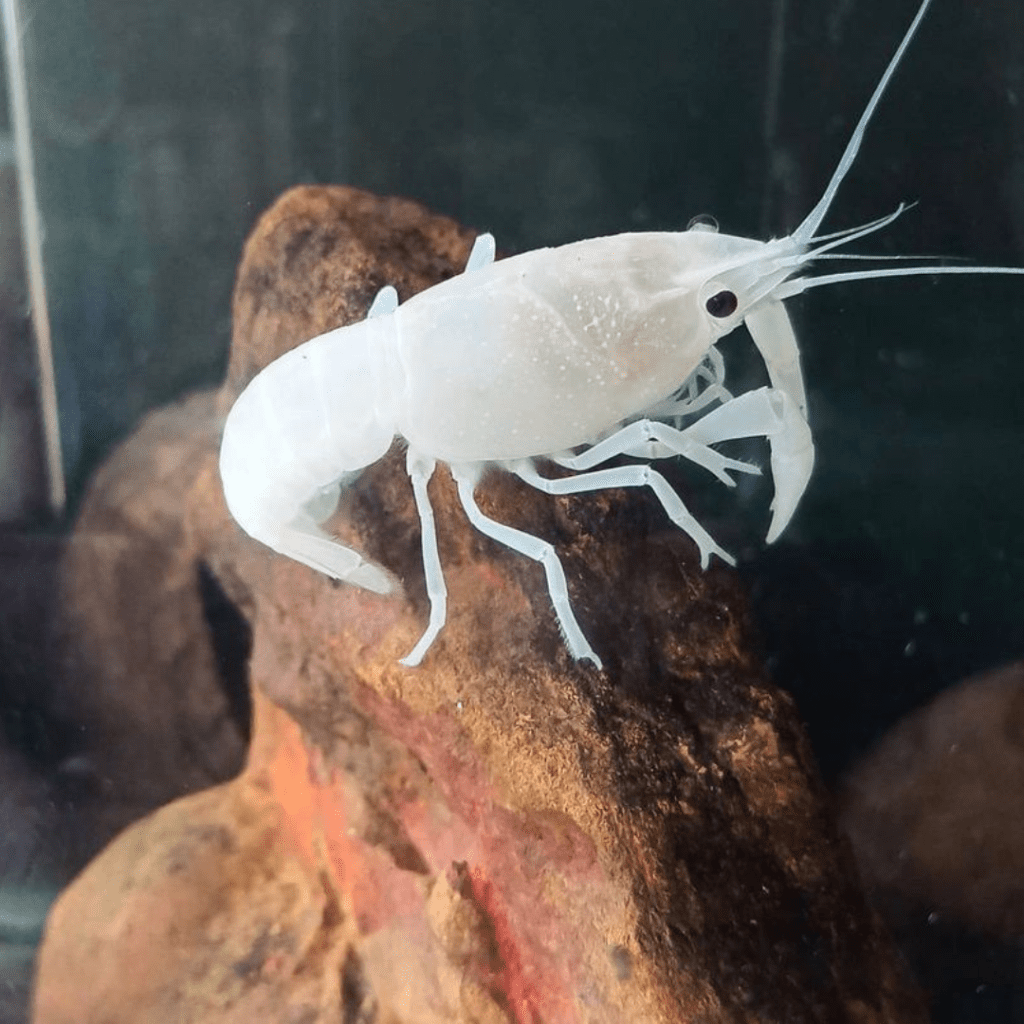
Crayfish are usually colored green, dark brown, or red. But albinism in this one has turned its carapace a ghostly white. And, as you can see, it’s not just the outer shell; its legs and antennae are also white now. It’s fascinating to see how albinism affects different species, isn’t it?
15. Leucistic Vulture
Vultures are well-known for their scavenging behavior; they are synonymous with hovering or lying in wait. If you didn’t know, the reason for this cliche is that they feed on dead animals. If you need another reason to feel hesitant about seeing them circling above, turkey vultures (as seen here) have a wingspan of 2.2 feet and weigh 1.5 kg!

This vulture doesn’t have albinism; it has leucism. What’s the difference? Albinism is a complete lack of pigmentation, but leucistic animals may have partial pigmentation. They are actually two different genetic disorders. If an animal has some coloration, then it has leucism.
16. Chipmunks
Chipmunks and squirrels are both common rodents in suburban areas, but it’s hard to mistake the two. Aside from their size, one of the most distinct charismatics of chipmunks is the stripes running along their back. But that isn’t a good way to identify this little cutie.

With albinism, this chipmunk is entirely white. From the angle in the picture, it might be difficult to distinguish it from a squirrel. There is no size reference, so how can you tell that it’s the smaller species? If you’re stuck, you can look at the tail. Squirrels have fluffier tails.
17. Gourami
This bulky-looking fish is called a gourami; these freshwater fish are native to Asia. But they can be found worldwide in aquariums and fish tanks. Their bright colors help make any aquatic setup really pop. Of course, this one might not be ideal for that…

This albino gourami is as pale as a ghost. Although it may not be chosen as a colorful addition to this fish tank, it certainly stands out. As you can see, the lack of melanin due to its albinism has affected its scales.
18. Hummingbirds
Hummingbirds are small, cute birds known for their fantastic fly skills that give them the appearance of hovering. They can fly up, down, and even upside-down. (See what we did there) Aside from their flying skills, their bright colors are always a sight to behold.
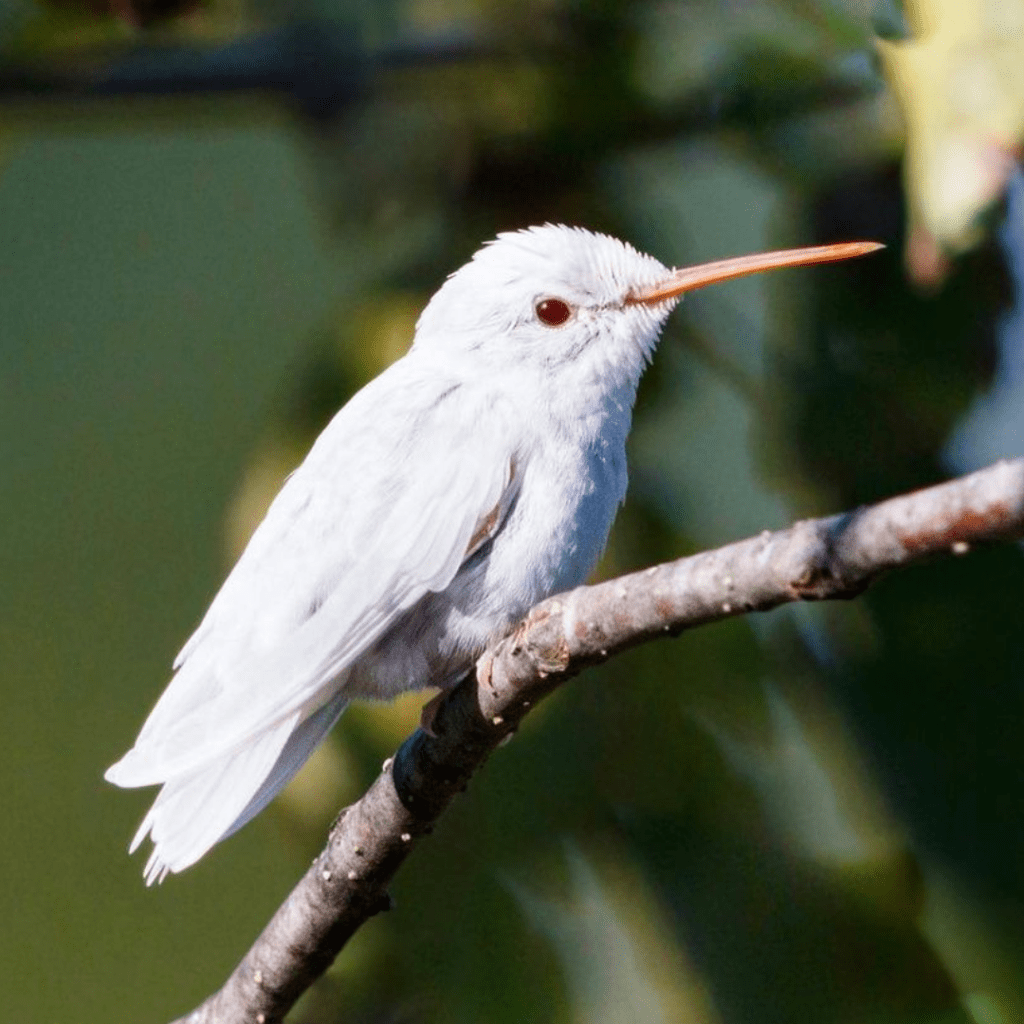
Hummingbirds are welcome visitors to any garden, and this white beauty would certainly not be turned away. Leucism has turned its feathers white, making the already breathtaking bird stand out even more. We’re so jealous of this Instagram user; we want to see a white hummingbird for ourselves!
19. Jackdaw
We’re not done with birds yet. Crows and ravens aren’t the only animals in the family Corvidae. This rare jackdaw was spotted in Whales. That birdwatcher must have had quite a shock upon spotting it hanging out in the trees.

Corvids are known for their intelligence, so we can only assume that this one knows how special it is and was happy to pose for the camera. The gardener who spotted it mistook it as a white dove, but upon closer inspection, he discovered that it was an albino jackdaw.
20. Poor Alligator
Don’t get crocodiles and alligators confused. Though they make look identical to the untrained eye, the easiest way to tell the difference is in their mouths. Alligators have rounder jaws, and their teeth only protrude downwards. Meanwhile, crocodiles have more pointed jaws when seen from above, and the teeth in their lower jaw stick upwards more visibly.

Like many other animals, alligators are colored in a way to blend in with their surrounding. But that certainly isn’t the case with this one. Prey would spot him coming from a mile away, and predators wouldn’t struggle to spot him, either.
21. White Lion
If we had to pick our favorite animal on this list, we’d struggle to pick just one. But this rare white lion would certainly be in our top five. We could spend hours looking at this photo, and judging by his face, the lion knows just how magnificent he is.

As we’ve said before, albinism affects animals’ ability to blend in with their surroundings, making them an easy target for predators. Fortunately, lions are more used to being predators, so he doesn’t need to worry as much about being eaten. However, he might struggle to hide in the tall grasses of the savanna when hunting for food.
22. Small Kangaroos
The next on the list are these cute little lookalikes of kangaroos. They are called Bennett’s wallabies. Just like the crocodile and alligator situation, kangaroos can be confused for wallabies. The easiest way to tell the difference is their size, as wallabies are smaller than their relatives.

This wallaby isn’t one in a million; it’s one in a colony! It lives on an island off the coast of Tasmania, along with other albino wallabies. Albinism is a recessive trait, meaning that it takes two parents with the gene to pass it on to their offspring. To have a large group of albino animals is beyond rare!
23. Golden Zebra
Zebras are already a unique creature of nature because of the black and white stripes on their bodies, but this one has taken it to another level by replacing the black with a subtle touch of gold. It looks stunning nonetheless.

Albinism is usually characterized by white coloration, but since it is caused by a lack of pigmentation, albino animals can sometimes have other pale colors. That’s why this rare zebra isn’t all white. If it were, we’d have a hard time telling it apart from, say, donkeys.
24. Cuties
Albinism is spread across every kind of animal, even in the most famous bird of New Zealand, the Kiwi! Kiwis are one of the few birds that cannot fly. These tiny creatures are land-bound, but we love them just the same.

You can’t tell from the picture, but kiwis are roughly the size of chickens. They usually are colored black or dark brown, but without melanin, this cutie is as white as snow. And those fluffy feathers are melting our hearts.
25. Lazy Koalas
Koalas are lazy animals, as they spend most of the day sleeping. While humans supposedly need at least 8 hours a day, koalas spend at least 18 hours a day asleep. But we’re not complaining because sleeping koalas are as beautiful and adorable as a newborn baby.

Koalas are a short boat ride away from Kiwis, as they are found mostly in Australia. Of course, finding a white koala might be a harder task, given that they’re so rare. Then again, the white color would make it easier to spot among the trees.
26. Snowflake
The theory of evolution by natural selection tells us that gorillas are the closest relatives of humans. This gorilla might be genetically similar to us, but it has one trait that is not so common. You guessed it: it has albinism!

The one you see in the picture is an albino gorilla called Snowflake, and it’s no surprise how he got his name. He is unique in more ways than one. Apparently, he was the only known albino gorilla, though that’s probably a good thing because his parents were related!
27. Rabbit
Meet Holly. She is a Flemish Giant rabbit — emphasis on the “giant.” On average, they weigh 15 pounds and are roughly 4 feet long! Though it may seem disturbingly large, their cuteness gets rid of any doubt we might have.

Holly looks like she belongs in Monty Python and the Holy Grail, guarding a hidden cave and fending off even the bravest of knights. Although she is a domesticated rabbit, she clearly gets plenty of exercise. How would you react if you saw someone with a giant white rabbit on a leash?
28. Pink Buffalos
As we are getting on in the list, the strangeness of the creatures is also increasing. This one is also another example of how a change of color can make a big difference in how the animal looks. Albinism can truly do wonders in nature.

Here we have yet another animal that is often mistaken for its cousin. This albino buffalo is not to be confused with bison. While they make look similar, bison refers to a species of bovine found in North America. Buffalo are found in Southern Asia and sub-Saharan Africa.
29. Penguins
Penguins are typically known for living in the snowy lands of Antarctica. But this rare bird was born in Gdansk Zoo in Poland. The zookeepers must have had quite a shock when it was born. We feel confident in guessing that it attracted a lot of new visitors to the zoo.

We’re glad that it was born in captivity because it is not only white but blind as well. This is likely due to its albinism; rare genetic conditions often come with unwanted side effects. But the zookeepers are certainly giving it plenty of love and food, so it should live a long and happy life.
30. Divine Peacock
Peacocks are known for their vibrantly colored feathers. But that’s only true for the males. Like many other animals, the males are the ones that are brightly colored, while their female counterparts are more bland colors. This is because the males need to work hard and show off their genetics when wooing potential mates.

This leucistic peacock might have some trouble finding a mate. Personally, we love the white color, but peafowls might not find it as attractive. With the feathers spread out like that, we can’t help but imagine it as a creature from mythology, don’t you think?
31. Albino Rattlesnake
The rattlesnake is a very dangerous animal, and it’s really the last thing you would want to see in front of you because these pack a lot of poison, ready to deploy in your body at any time. But an albino rattlesnake doesn’t seem nearly as dangerous.

With the pale coloration, they are not only cute but also easy to spot. In this situation, we are the “prey” that can find it not-so-hidden amongst the green grass. However, it looks like this Instagram user wasn’t afraid of the venom. How brave were they?!
32. Oh My Dog
Albino dogs are just like any other domestic canines. In fact, it might be hard to tell if a doggo is melanin deficient or just white-haired. We’re sorry to say that, if you have a white dog, it’s probably their breed, not a genetic anomaly. One easy way to tell the difference is to look at their eyes.

You can easily differentiate between an albino dog and a white dog by looking closely into their eyes because dogs that have albinism have their eyes also whiter and somewhat “scary” than the normal ones; the only color is in the black pupil.
33. Old Monkey
When humans get old, the color of their hair turns white. That certainly can’t be what’s happening here, because this monkey is obviously still young. This is a vervet monkey, which is usually colored white — so how can we tell that it’s albino?

Unlike the other primates in its troupe, this monkey has pale skin underneath its white hair. Typically, vervet monkeys have white-ish hair and black faces and paws. But, honestly, what we love most isn’t its albinism but those adorable eyes!
34. Raccoon
Can you guess which animal is there in the picture? You would never have thought it was a raccoon, but it certainly is! We have all seen raccoons and the mischief they create, but this version of them is pretty unique.

Raccoons, or trash pandas as they are sometimes affectionally called, are usually pretty cute. But we hate to admit that we don’t find this white mammal cute; it’s honestly something more out a nightmare. Or, more accurately, a ghost story.
35. Baboons
So far we’ve seen gorillas and monkeys, and we’re back with another primate: baboons. They are in the same family as our cute vervet monkey we saw only a few images ago. Some baboons have dark fur, while others are on the lighter side. We’re not sure which species this one is.

As we’ve seen in some other animals on this list, white doesn’t automatically mean albino. This baboon has leucism. Its white hair and pale skin are a result of melanin deficiency, not absense. Unfortunately, it has the same result in making it stand out amongst the green grass.
36. Time for Cows
We have shown you an albino buffalo, so why not show you an albino cow. We can all agree that they look equally, if not more strange, than the buffalo because we are used to seeing them with black and white patches.

These albino species of cows are found in the state of Laos, where they live with their herd. Like every other animal in the list, they are also present in very small numbers, and if you happen to stumble upon one, don’t forget to get a picture.
37. Famous Bird
The jungle is full of all kinds of animals; birds, tigers, elephants, ants, and everything in between. But for filmmakers, the most important animal happens to be the Australian Kookaburra, the bird you see in the picture. But what’s so special about them? Aside from the silly name, that is.

Filmmakers use a sample of their cackel in almost every jungle scene in movies and TV shows. In fact, we can bet that you’ve probably heard their call at some point. Since albinism affects melanin, and therefore its looks not its sound, this kookaburra’s song sounds the same as its colored friends.
38. White Tiger
Tigers are one of the deadliest animal species in the jungle and you would never want to stumble across one out in the wild. But they are as beautiful as they are deadly. One look at this Bengal tiger, and we can’t help but fall in love.

Unfortunately, their unique color makes them a target for poachers. White tigers such as this one are a sub-species of Bengal tigers. Their white color is due to leucism, not albinism. In fact, there is only one known case of true albinism in tigers.
39. Ostrich? Nah..
Are you also thinking the same? It is an ostrich, right? Wrong! This bird can easily be mistaken with an ostrich but its certainly not one. This bird is called a rhea, though it is also known by its traditional name, nandus.
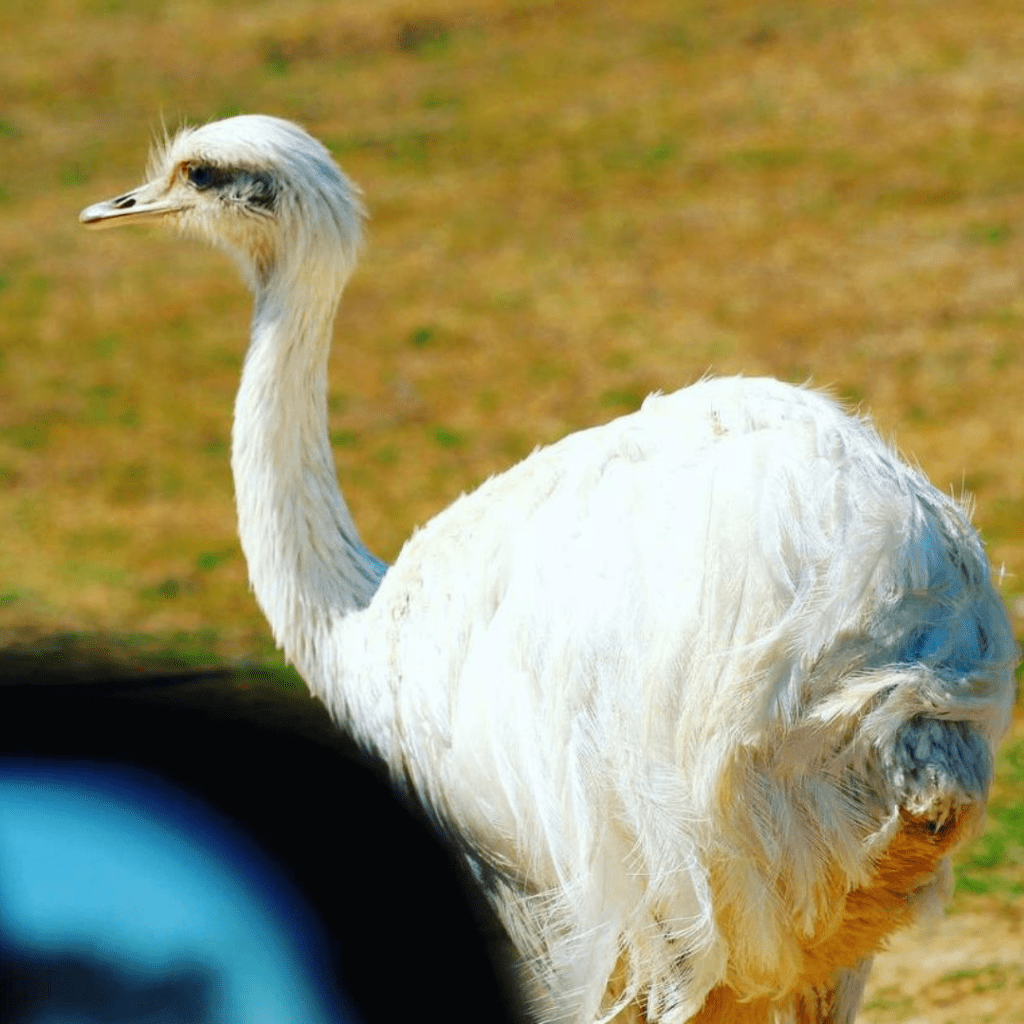
It is mostly found within South America, and it shares many characters with an ostrich, though they are a little shorter than the latter. This albino on rhea looks great and it’s a wonder of nature. As is the trend in this list, albinism and leucism create the most beautiful creatures.
40. What’s this?
We also were as shocked as you are when we saw this first. When we dug deep, we found that it is echidna which is solely found in Australia and Papua New Guinea. Maybe that’s why you, like us, weren’t able to identify it so quickly.
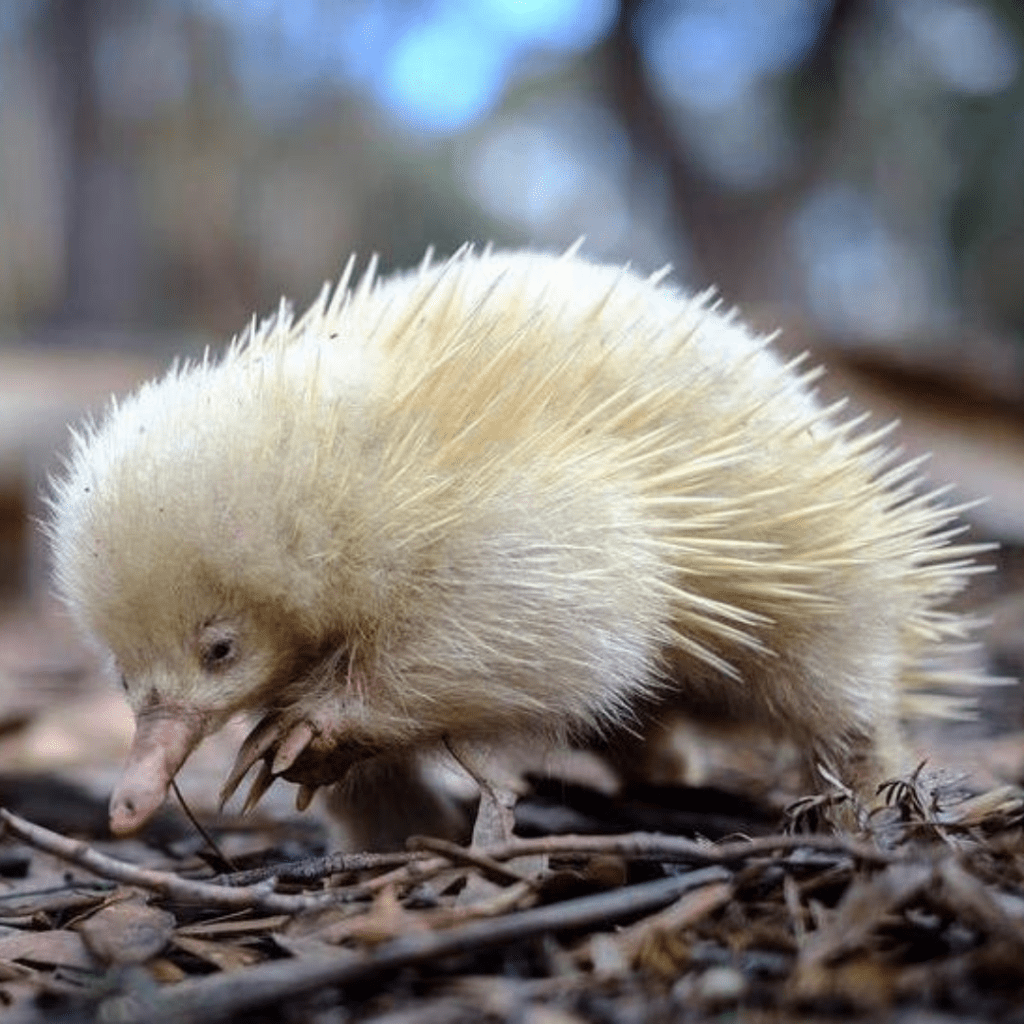
But seeing her for the first time, we can’t agree more that she is very cute. This is an echidna, a close relative of the platypus (any Perry the Platypus fans out there?), and is one of only two mammals on earth that lays eggs.
